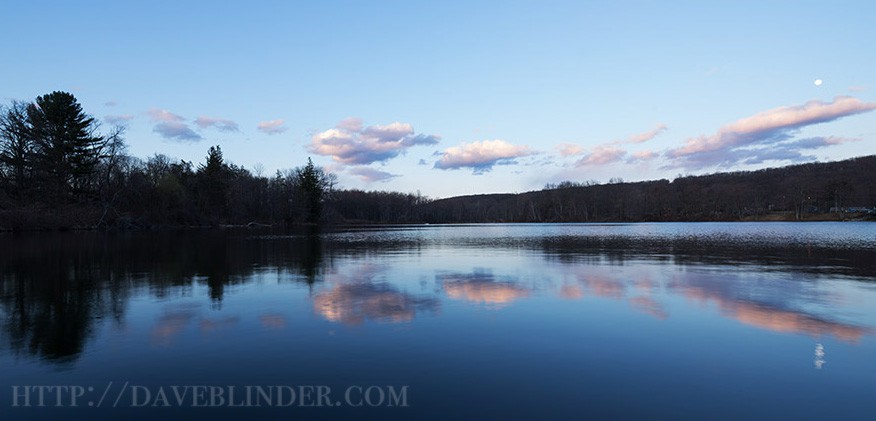My typical nature photo post-processing workflow is very short and sweet unless I have to remove sensor dust spots from shoot at a vary small aperture. I do like to present my images as realistically and un-manipulated as possible. My still image format is always camera RAW to get the best possible dynamic range and so that I can make my own decisions over noise reduction and sharpening. I had the great fortune of finding a wild Black Bear descending a tree in Northern New Jersey today.
Here is my finalized and optimized image with my typical watermarks and downsized at 900px as I generally do for web usage:

A wild Black Bear descending a tree in North NJ. Photographed with the Tamron SP 150-600mm VC, the Canon EOS 7D, and a Manfrotto tripod.
Taken with a tripod-mounted Tamron SP 150-600mm VC Lens and Canon EOS 7D. I had no time to prepare for the shot or change my camera settings. I had previously dialed in ISO 800 F/8.0 +2/3 Exposure Compensation in Aperture Priority Mode, so the shutter speed was to be determined by my camera’s meter. In this particular shot my 7D did a good job of gauging the brightness and I was left with a shutter speed of 1/80th of a second and a good exposure. In the world of wildlife though, this is a relatively slow setting and prime for blur of subject movement.
Below are 100% crops to reveal what is really going on behind the scenes in my “digital darkroom”

On the right is a very unflattering view of my unprocessed RAW at high magnification and on the left is a slightly more flattering view of my output JPEG at the same magnification.
As you can see the eye and fur definition is lacking on the SOOC file on the right. The Tamron SP 150-600mm VC is very sharp near the 400mm focal length and at apertures like F/8. Unfortunately AI Servo focus is often less accurate than One-Shot focus. Other reasons for image softness may include: very slight subject movement, auto-focus sensor slightly off the bear’s eye, shooting in the shade (low contrast on subject), and perhaps the panning movement on my tripod head.
After my initial default global sharpening of the RAW file, I applied an additional low-intensity High-Pass Sharpening layer. I still was not happy with the definition on the bear’s face. I created an additional layer of global High-Pass sharpening, but this time I erased the effect off of the background to prevent introduction of widespread digital noise. I also feathered the remaining sharpening a bit, by tracing the bear’s outline with an eraser tool set to 50% to maintain a natural transition from subject to foreground. This is one method of performing selective sharpening to optimize images and get the best out of your photos.
Happy to answer any questions about my workflow if you leave them in the comments.
…








